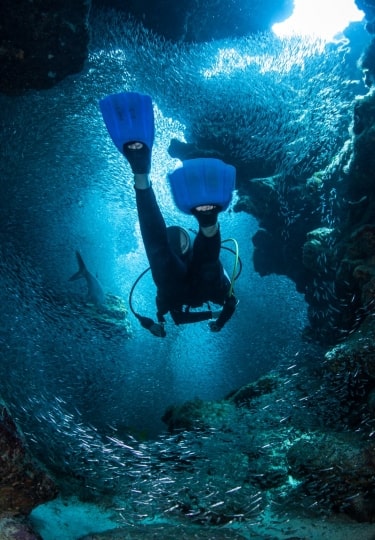The Caribbean is one of the best places in the world for scuba diving. Known for its calm conditions, fantastic visibility, and diverse underwater ecosystems, the best places to scuba dive in the Caribbean are too many to include in one list.
Explore the second-longest reef system in the world, which runs from Belize to Mexico. Embark on some easy shore diving in the Dutch ABC islands. Visit underwater museums in Grenada, where you can swim around sculptures and shipwrecks at the same time.
Learn where to find some of the best scuba diving sites in the Caribbean, where you could easily spend a lifetime underwater and never see the same reefs twice.
RMS Rhone, Tortola, British Virgin Islands
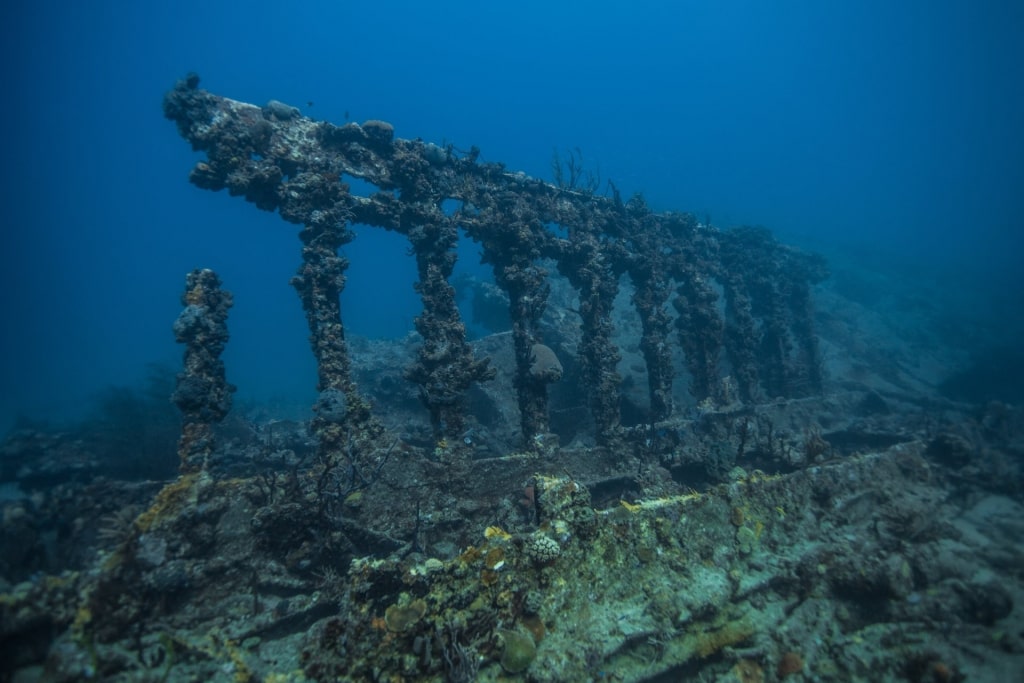
RMS Rhone, Tortola, British Virgin Islands
The only downside of a vacation to the British Virgin Islands is that there’s so much to do. If you only have time for one quick dive, head to the RMS Rhone, a mailing ship that sank during a hurricane in 1867.
The RMS Rhone is an excellent dive for certified divers that are only beginning to explore shipwrecks. More than 300 feet long, the wreck allows for multiple dives, where you can discover different ends of the ship. There aren’t many enclosed areas since much of the vessel has aged away. However, there are some wide swim-through areas and plenty to see, like sea turtles, barracuda, and the remains of the iron hull and engine block.
Antilla Shipwreck, Aruba
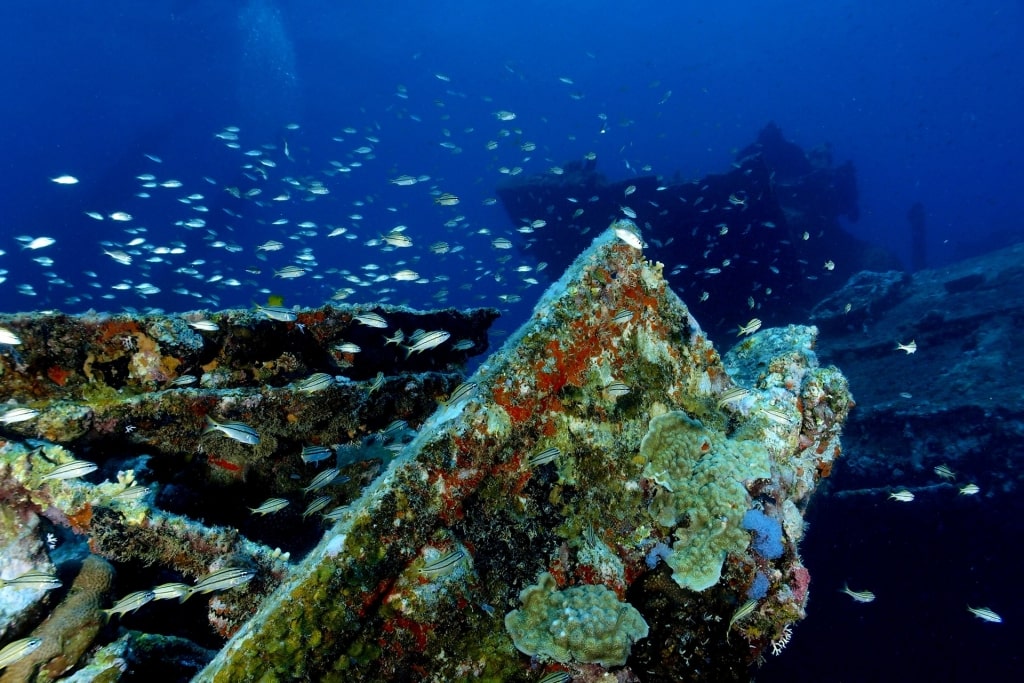
Antilla Shipwreck, Aruba
Aruba is well-known in the diving community as the home to some of the best scuba diving in the Caribbean. This happy island offers the perfect mix of on-land activity and underwater sites. And while there are plenty of options for you to explore, the Antilla Shipwreck should make it to the top of your list.
The Antilla Shipwreck is easily reached by boat on a trip that only takes a few minutes from the shore. Around 60 feet deep and more than 400 feet long, the Antilla Shipwreck attracts everything from tiny crabs and lobster to the occasional sea turtle and larger marine species. Even better, this site doesn’t require an advanced open water certification, allowing both beginners and advanced divers to explore the site.
Read: Best Beaches in Aruba
Arrecifes de Cozumel National Marine Park, Cozumel
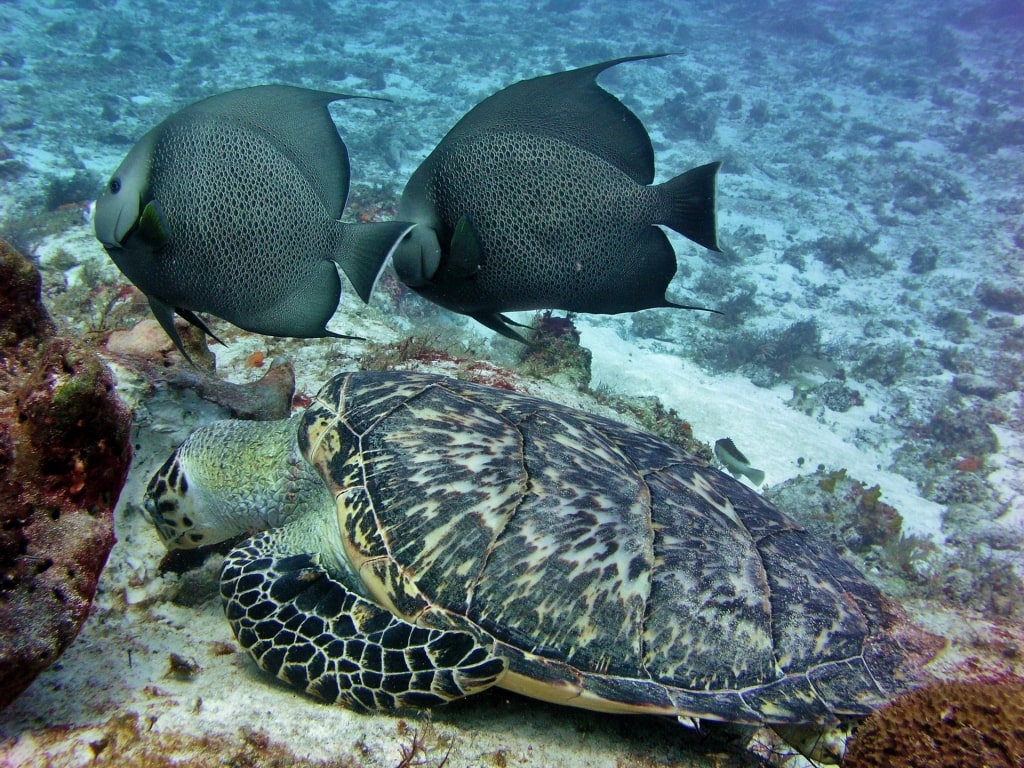
Arrecifes de Cozumel National Marine Park, Cozumel
Cozumel has a lot going for it when it comes to diving, but most divers like to visit sites within the Arrecifes de Cozumel National Marine Park, which protects the northernmost point of the world’s second-longest reef, the Mesoamerican Barrier Reef System.
The Arrecifes de Cozumel National Marine Park has depths ranging from 30 feet to 300 feet, making it ideal for novice and advanced divers alike. It is also home to more than 1,000 marine species, which is one of the reasons why it’s so popular with divers. On a single dive around this well-preserved reef, you may see dolphins, stingrays, eels, endangered sea turtles, and colorful schools of fish.
Bonaire National Marine Park, Bonaire
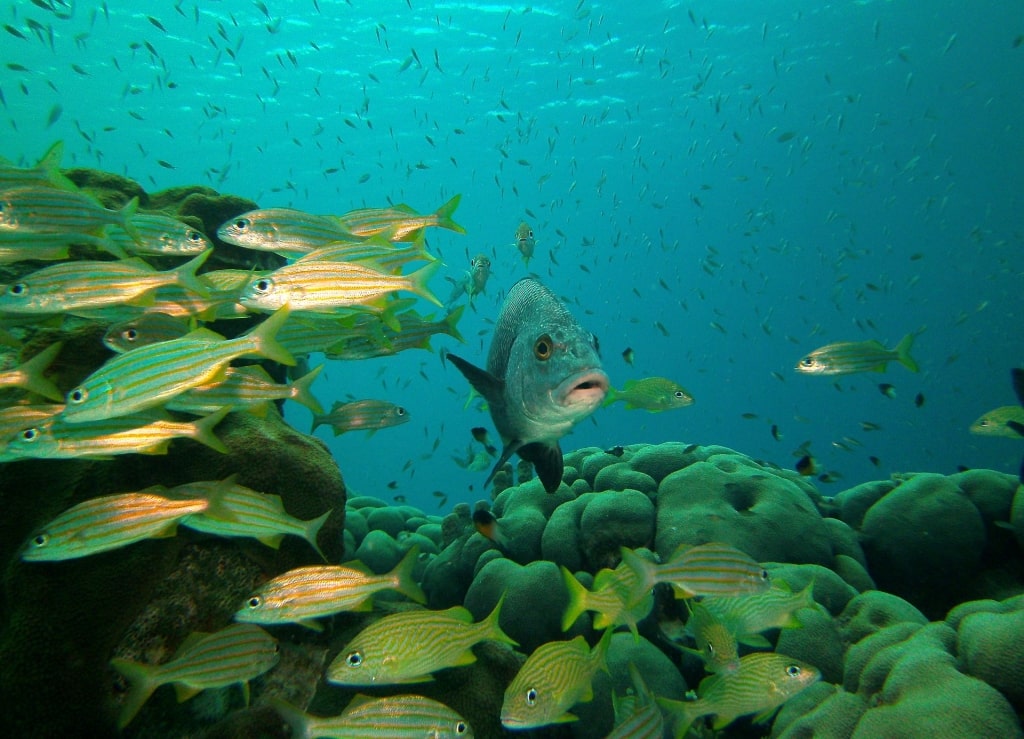
Bonaire National Marine Park, Bonaire
Aruba’s neighbor to the west, Bonaire, is a bit sleepier, but don’t let that fool you: Bonaire has some of the best scuba diving sites in the world. If you like shore diving, it’s one of the best places to dive in the Caribbean as it has more than 60 dive sites that are easily accessed from the island’s beaches. Shore diving is usually quick, easy, and shallow, therefore Bonaire is a perfect destination if you’re looking for a place to get certified or to complete your first few dives.
The Bonaire National Marine Park runs 1,000 feet outside of the island’s perimeter. Popular sites to go diving in Bonaire include the “Alice in Wonderland” reef, which has two parallel reefs; the “1,000 Steps” dive site, which doesn’t have anywhere near 1,000 steps; and the famous Hilma Hooker shipwreck.
Devil’s Grotto, Grand Cayman
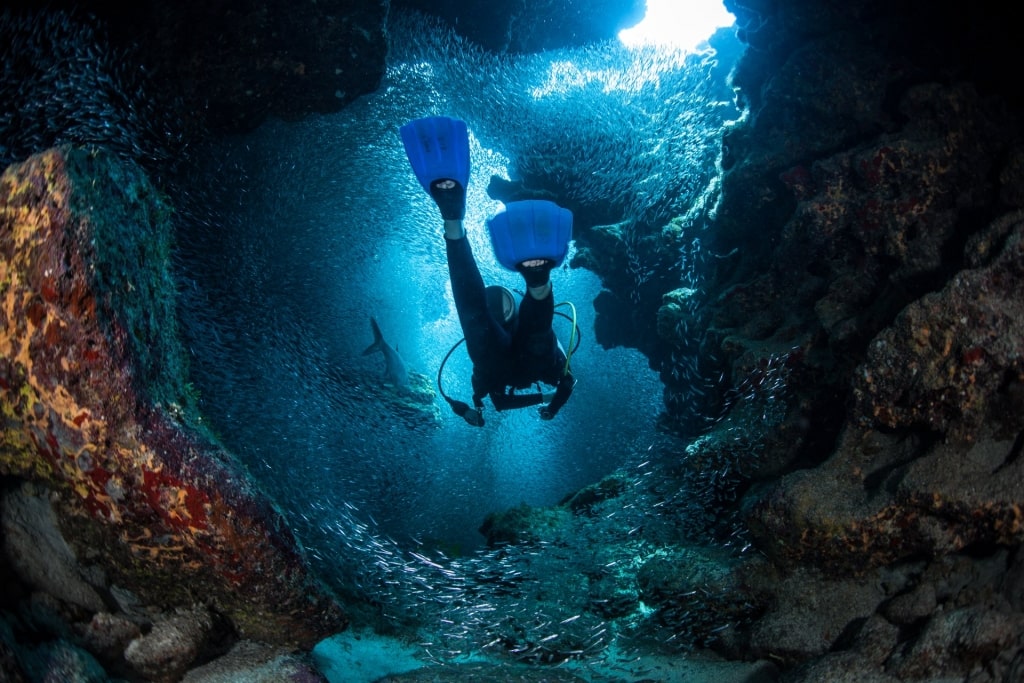
Devil’s Grotto, Grand Cayman
Grand Cayman is another site known for its world-class diving, and not just because the visibility there averages more than 100 feet. The islands have everything a diver could want, including beginner and advanced diving sites, shipwrecks, varied marine life, and tiny creatures ready to pose for the perfect underwater photo.
One particularly well-known site in Grand Cayman is Devil’s Grotto. This dive site includes a series of underwater caves and coral tunnels, making the experience of diving there much like swimming through a maze filled with hundreds of fish. Advanced divers can be a little more adventurous with their route, while beginner divers can swim alongside the formations, admiring the light and shadows that bounce against the rocky landscape.
Cane Bay, St. Croix, U.S. Virgin Islands
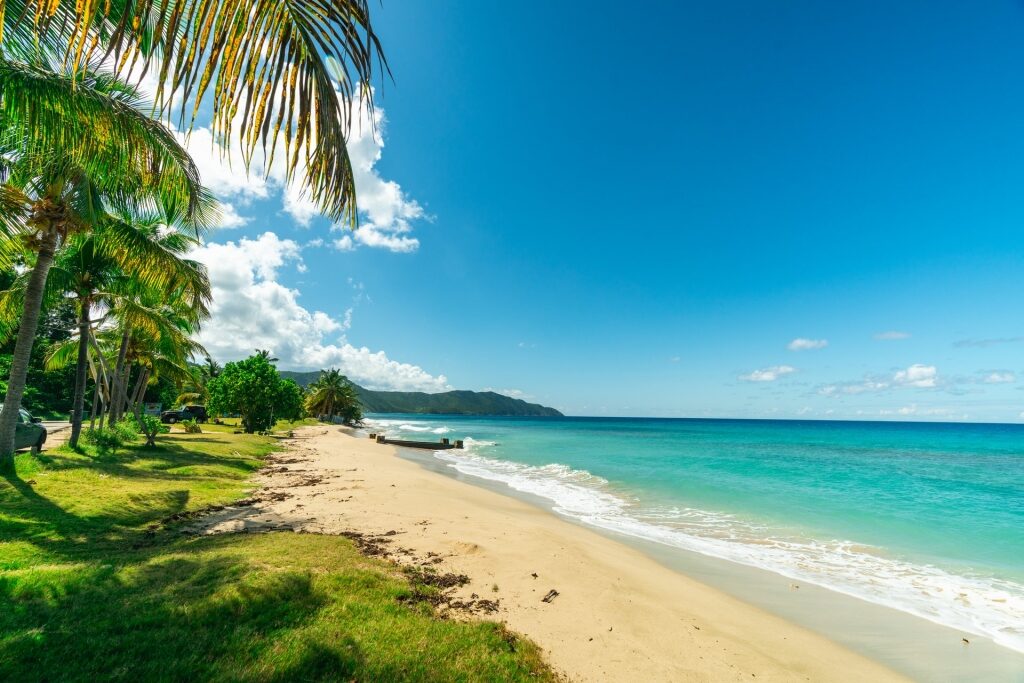
Cane Bay, St. Croix, U.S. Virgin Islands
Diving around a reef wall can be an impressive underwater experience, as these steep vertical drop-offs are covered in coral and marine life. If you want to explore a tropical reef wall, head to Cane Bay in St. Croix, one of the best scuba diving sites in the Caribbean and the island’s most famous dive.
It’s a top-rated destination for underwater photographers, who flock there for epic wide-angle shots and up-close-and-personal photos of tiny seahorses and nudibranchs.
Due to the area’s occasional current and swells, and the fact that the site is fairly deep, it’s best to have your buoyancy skills well under control before attempting this dive. Chat with an experienced divemaster before getting in the water and plan your dive at a depth and distance you’re comfortable with to ensure you have a comfortable and amazing time in the water.
Escambrón Marine Park, San Juan
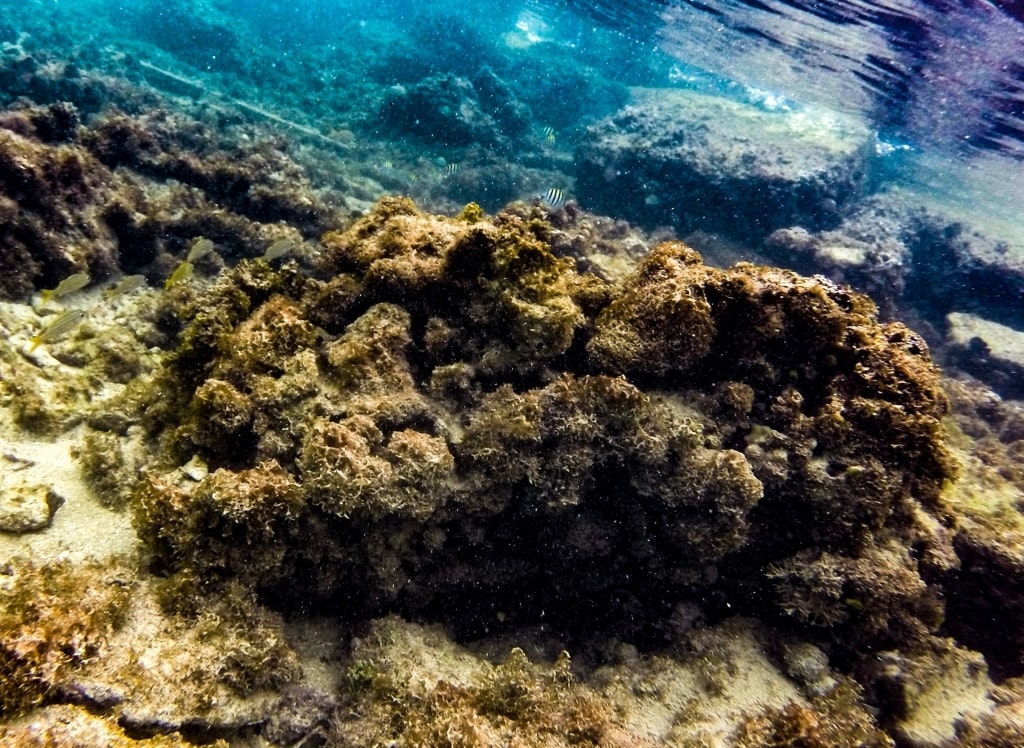
Escambrón Marine Park, San Juan
You don’t have to leave the United States to find some of the best diving spots in the world—although you do have to leave the mainland. At Puerto Rico’s Escambrón Marine Park, you’ll discover one of the most fun places to scuba dive in the Caribbean. Escambrón includes a “Lost City of Atlantis” site that is shallow, easy to navigate, and just a short swim away from the beach, making it an excellent spot for beginner and first-time divers. It’s located in an area of the park called La Pocita, which is only about 30 feet deep.
There’s plenty of other spots to entertain expert divers, too. There’s a section with cave formations and coral tubes, as well as several man-made reefs that attract some of Puerto Rico’s most recognizable fish. Expect to see deep blue midnight parrotfish, spiny grey hogfish, and maybe even goatfish or reef sharks.
Grand Anse, Grenada
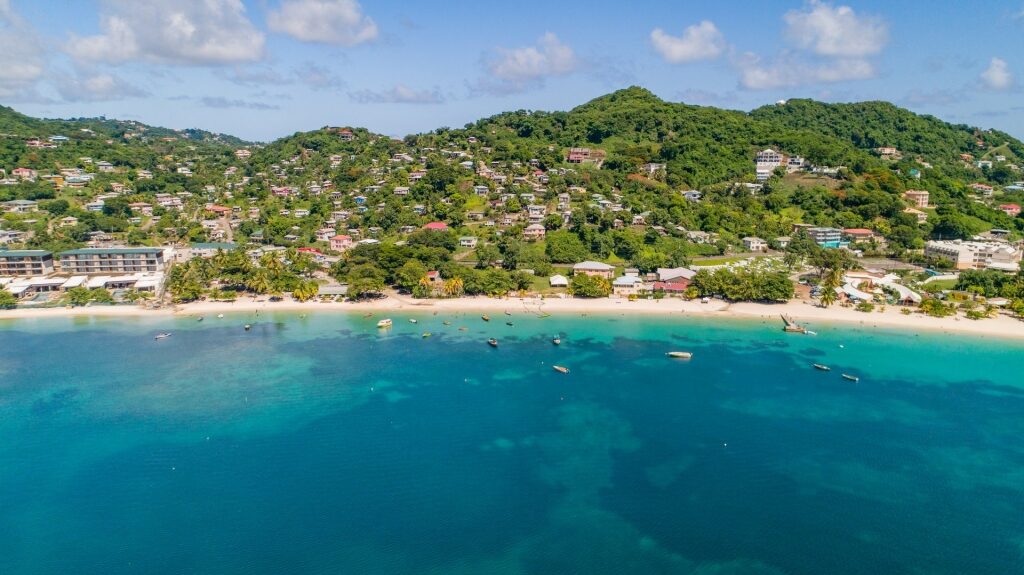
Grand Anse, Grenada
Grenada doesn’t get as much attention for its underwater reefs, but it has some of the best scuba diving in the Caribbean. Located just north of Bonaire and Curacao, the island’s two most famous dive sites are near the popular Grand Anse beach, on the island’s southwestern coast.
One of the top things to do in Grenada for advanced divers is to explore the Bianca C, the largest shipwreck in the Caribbean, which measures 600 feet long. You’ll require an advanced certification to swim around the shipwreck as it has a 100-foot depth, moderate currents, and enclosed areas within the ship. That being said, the wreck is one fabulous site and even has a swimming pool on the top deck to explore.
If you’re a beginner diver, head north of Grand Anse Beach instead and visit the Grenada Underwater Sculpture Garden, the first of its kind in the world. The underwater sculptures are only around 15-20 feet deep, allowing you to pose for photos next to a cyclist or sitting at a table complete with a pitcher and fruit bowl.
Read: Best Beaches in Grenada
Pigeon Island National Park, St. Lucia

Pigeon Island National Park, St. Lucia
St. Lucia is known for its duo of volcanic Piton peaks. But the island seismic activity also extends to its surrounding shores, where you’ll find impressive underwater formations.
The government of St. Lucia takes ocean conservation seriously, and as a result, the reefs are healthy and packed with life. There are dozens of dive sites around the island, including drift dives around underwater cliffs, shipwreck dives, and beginner dives on shallow reefs.
If you only have one day, head to Pigeon Island National Park, one of the best places to experience St. Lucia’s excellent diving. If you like underwater identification, the park is home to more than 100 types of coral and 300 types of fish, so you’ll have plenty to keep you busy during your dives.
Mambo Beach/Seaquarium Beach, Curacao
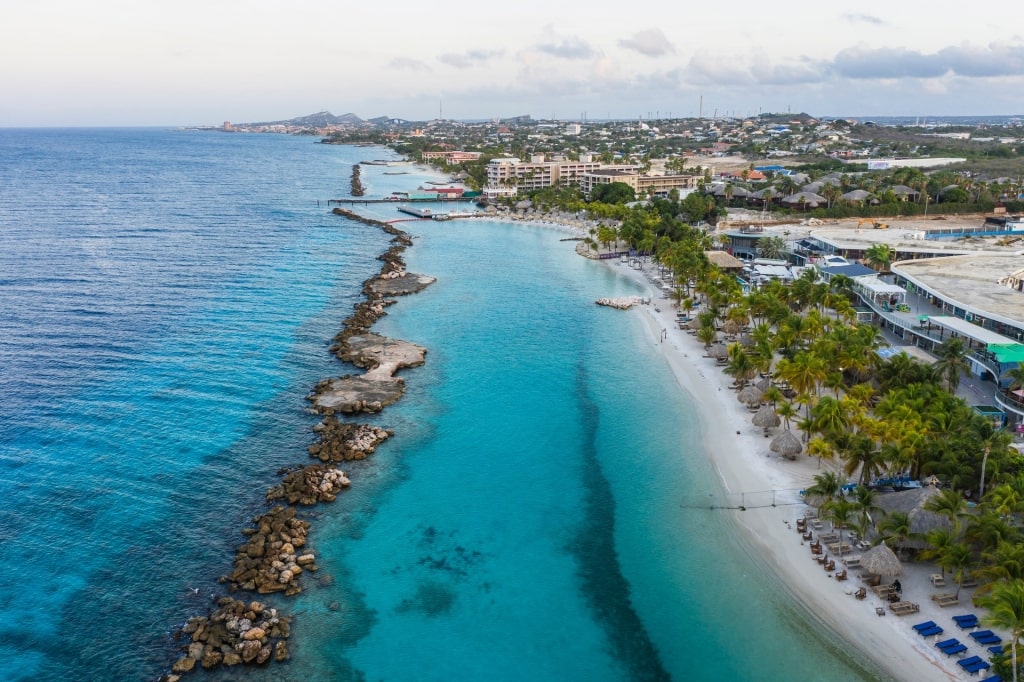
Mambo Beach/Seaquarium Beach, Curacao
While in Curacao, if you can find time in between snorkeling with stingrays and a catamaran sunset cruise to squeeze in a few dives, consider dropping below the surface of Mambo Beach. The dive site is called the “Seaquarium Reef” after the nearby research center and beach resort. Fortunately, though, a dive at Seaquarium Reef feels like being in an aquarium underwater, as the reefs in Curacao are healthy and natural, which attracts all types of Caribbean fish and sea creatures. There’s also a section called “shipwreck point,” which is a great spot for a two-tank dive day. If you like shore diving, this is one of the best beginner scuba diving sites in the Caribbean.
Butler Bay, St. Croix

Butler Bay, St. Croix
Butler Bay is another highly regarded area to dive in St. Croix because it contains six astonishing shipwrecks all within swimming distance of one another.
For open-water certified divers, one of the best things to do in St. Croix is to check out the “Northwind” tugboat, the 140-foot-long “Suffolk Maid” fishing boat, and the “Virgin Island” oil barge, all of which are located within 70 feet or less of water.
Divers with advanced certifications can explore the Rosaomaira, which sits at around 110 feet deep. The Rosaomaira accidentally capsized and still has some personal items of the workers buried underneath the sand and silt. Nearby, you’ll also find Coakley Bay, a second sunken tugboat.
Divers of every level can swim by the remains of the Aegir underwater habitat, a small NOAA research center that was abandoned in the 1980s. Having this many wrecks in one location is extremely rare, making Butler Bay one of the most unique, and worthwhile, scuba diving sites in the Caribbean.
Casuarina Point Reef, Grand Cayman (Coral Gardens)
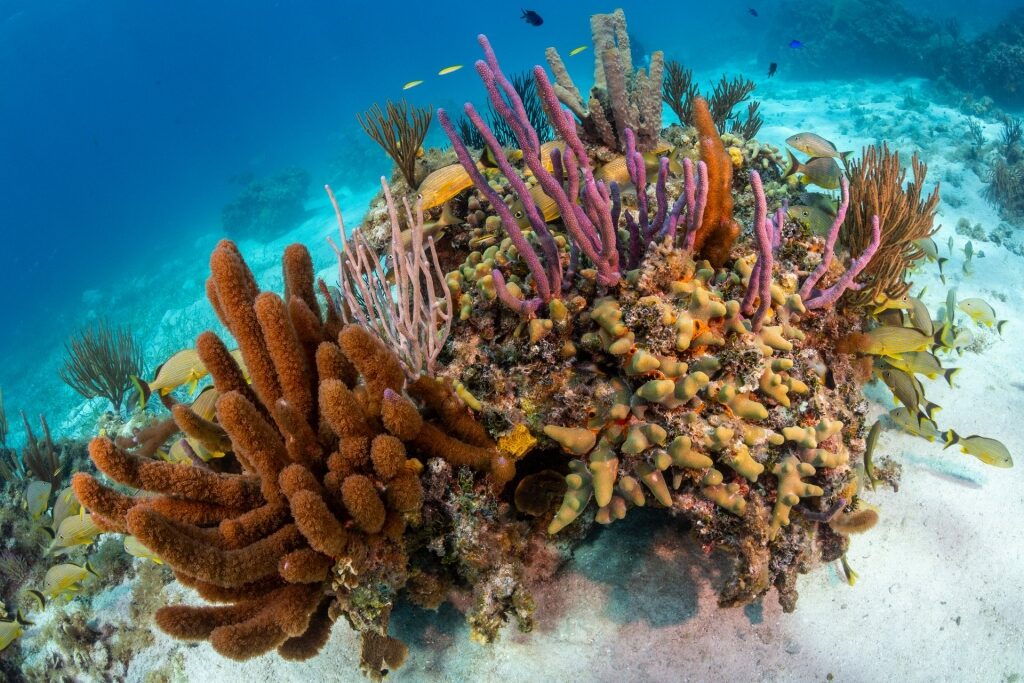
Casuarina Point Reef, Grand Cayman (Coral Gardens)
For an easy dive with large rewards, head to the Coral Gardens site on Grand Cayman, also known as the Casuarina Point Reef. This shore dive has an easy entry and bottoms out at around 55 feet, making it an excellent dive site for beginner divers, first-time divers, or divers who haven’t been in the water in a few years.
It’s well-known for being home to some of the best coral reefs in the Caribbean, as well as large schools of rainbow-colored fish, such as parrotfish and purple-and-yellow fairy basslets. This is near the Devil’s Grotto site, making it an easy second dive once you’ve complete the first, more challenging dive.
Barracuda Junction, Barbados
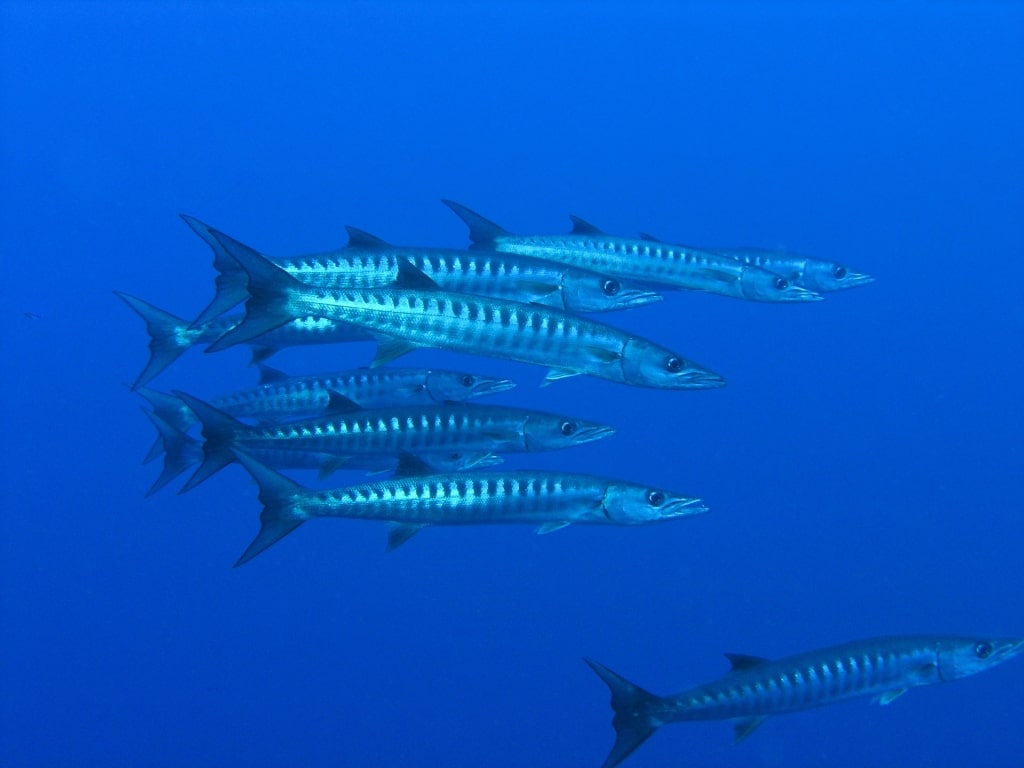
Barracuda Junction, Barbados
As a destination, Barbados isn’t particularly known for its scuba diving opportunities, but that might be a plus, as it means the island’s reefs are healthy and the dive sites never feel crowded. The shallow reefs are another bonus for divers. Not only do they create plenty of dive sites, but they’re also home to more than 200 wrecks around the island.
If wrecks aren’t your thing, head instead to Barracuda Junction to visit the site’s namesake residents. Located only about 10 minutes north of Carlisle Bay and the Barbados cruise ship terminals, Barracuda Junction is one of the best scuba diving sites in the Caribbean to see barracuda, which can reach up to five feet long and weigh close to 100 lbs. This site also attracts other creatures that think barracuda are tasty, like large grouper or (if you’re lucky) reef sharks. But don’t worry: reef sharks don’t prey on humans, just tiny fish.
Champagne Reef, Dominica
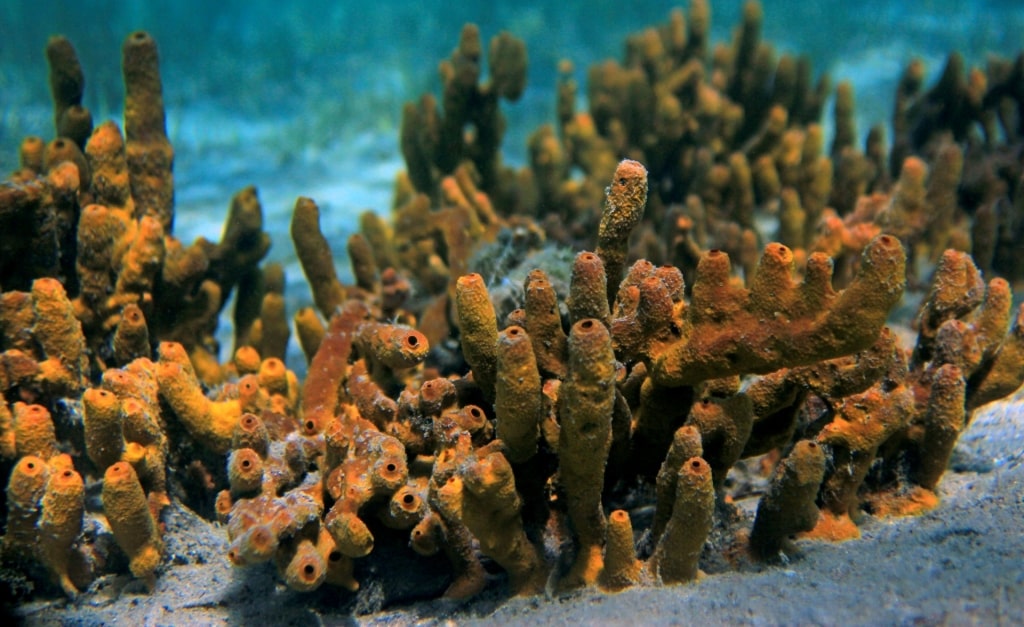
Champagne Reef, Dominica
You may have high expectations of a place called “Champagne Reef,” and fortunately, Dominica’s most-loved beach lives up to the type. Named after the bubbles that rise from underwater volcanic vents up to the surface, the water there is clear, warm, and ideal for year-round dives.
Champagne Reef has a gradual slope and is known for its small creatures. If you love macro diving, you’ll find it easy to spot teeny-tiny creatures like shrimp, seahorses, sea snails, and nudibranch. It’s also fun to swim while surrounded by bubbles, which are surprisingly loud underwater.
Read: Caribbean Beaches With the Clearest Water
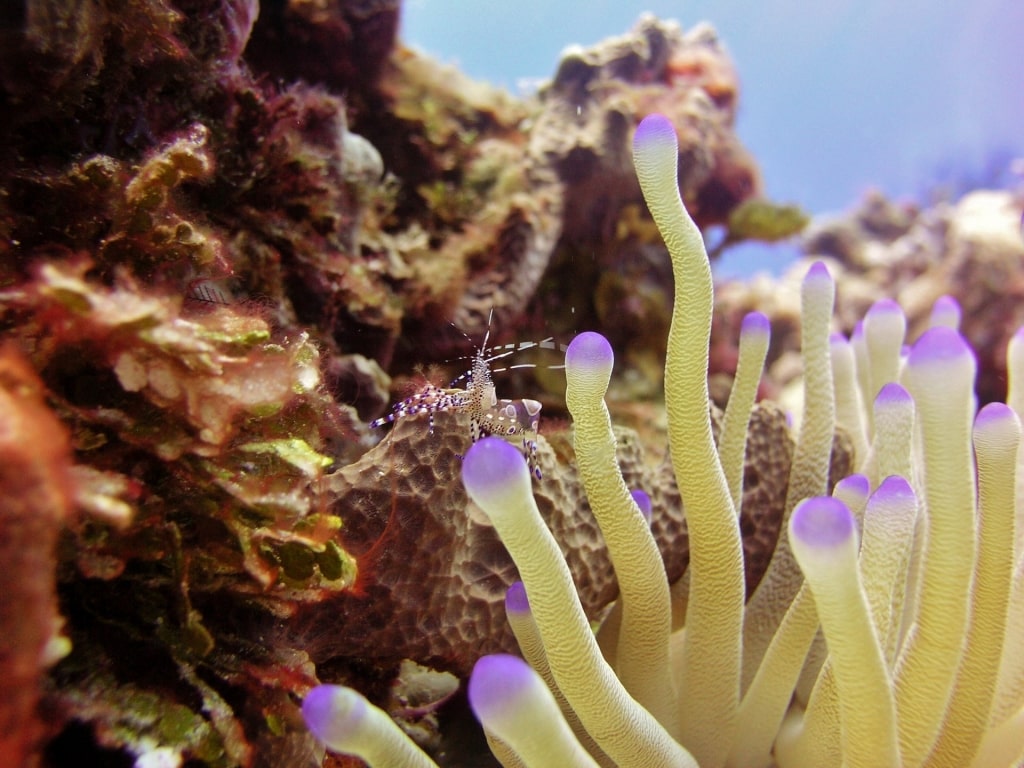
Arrecifes de Cozumel National Marine Park, Cozumel
While some Caribbean islands are more well-known for their diving opportunities than others, almost every island in the region has a few excellent dive sites to explore. If you’re ready to dive into planning your next tropical escape, browse Caribbean cruises on our website.
